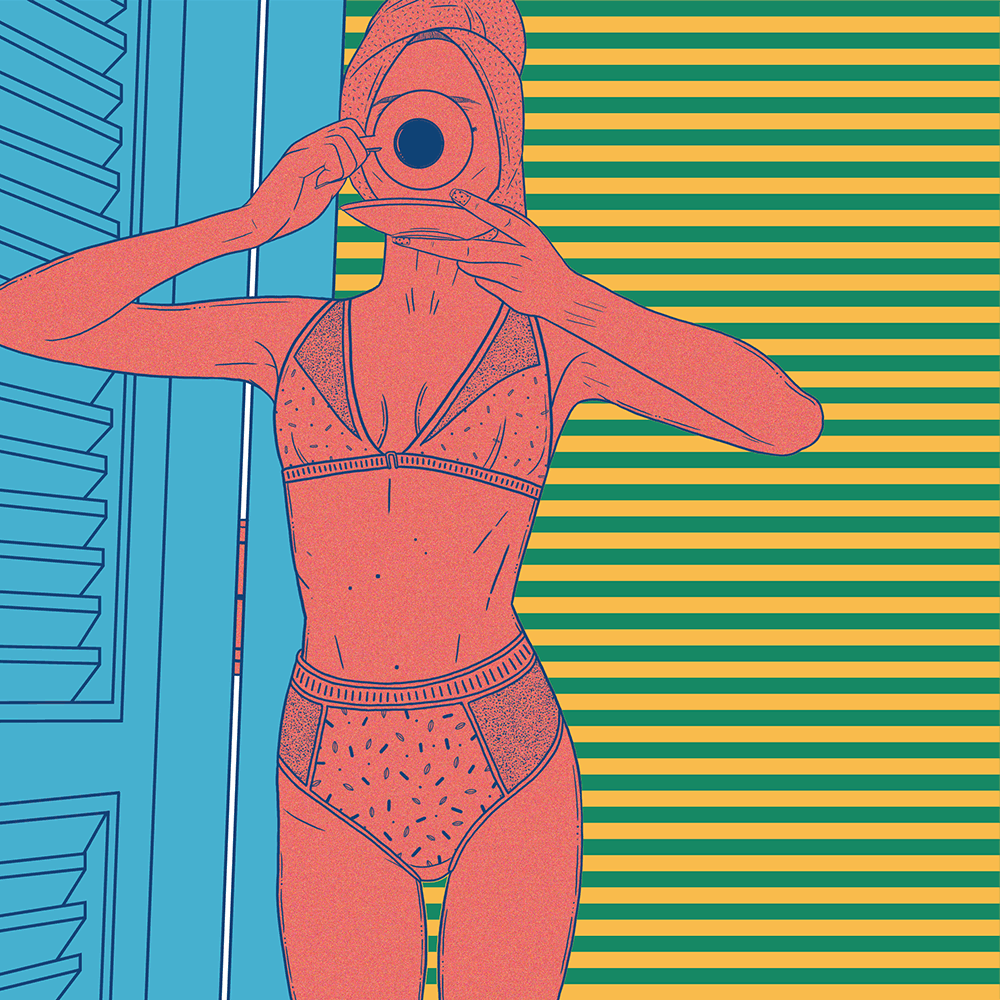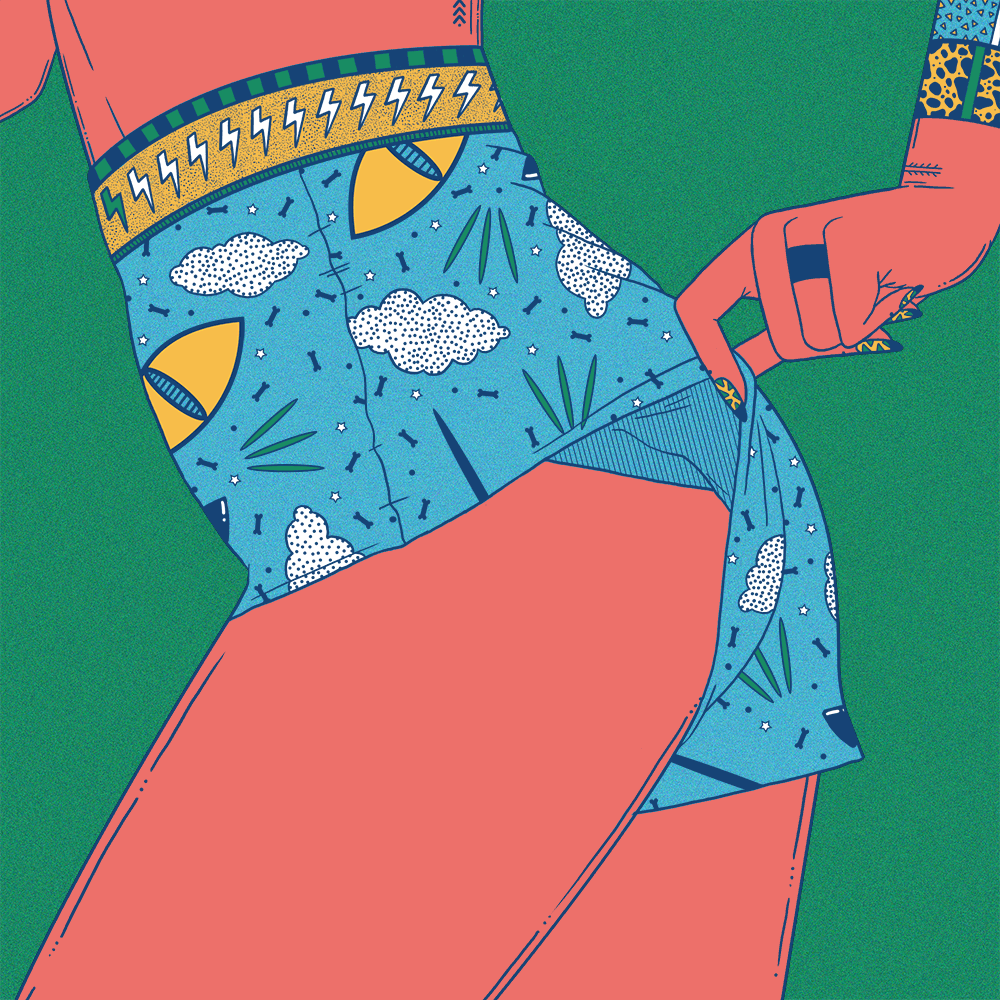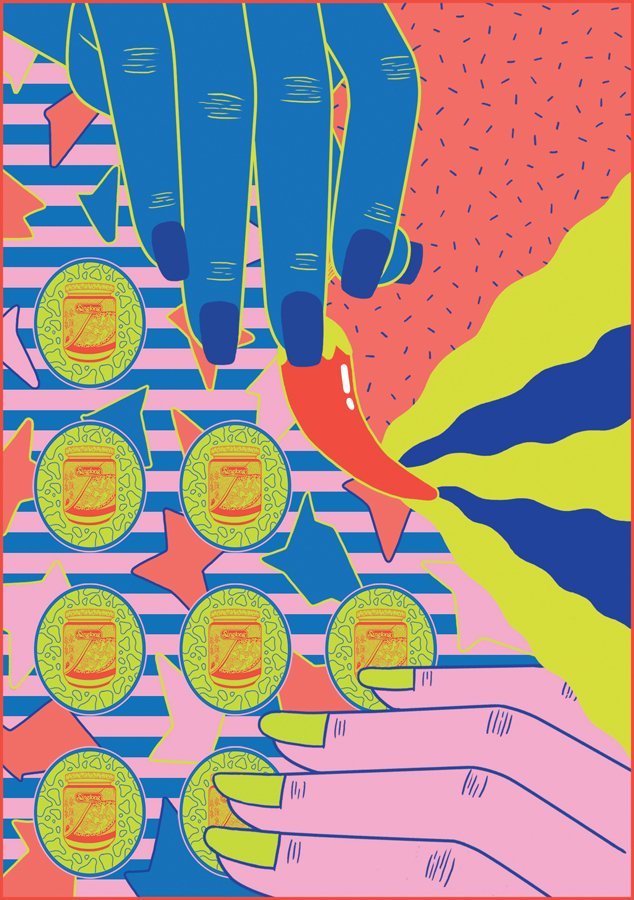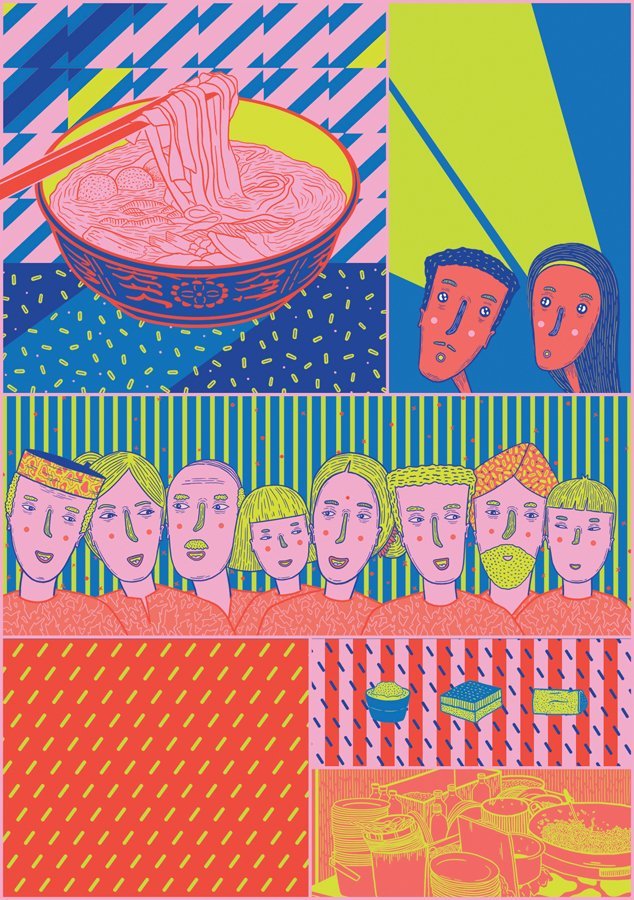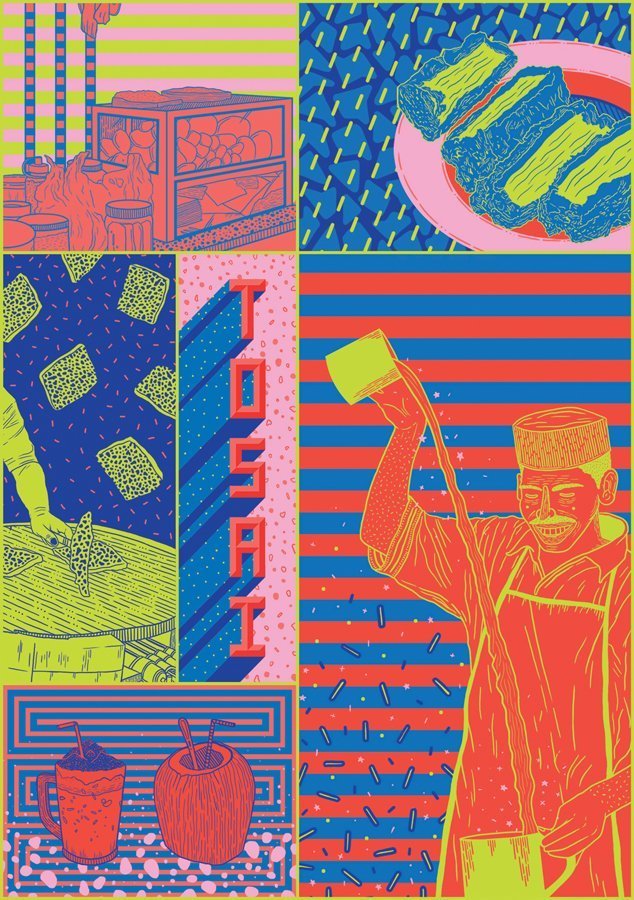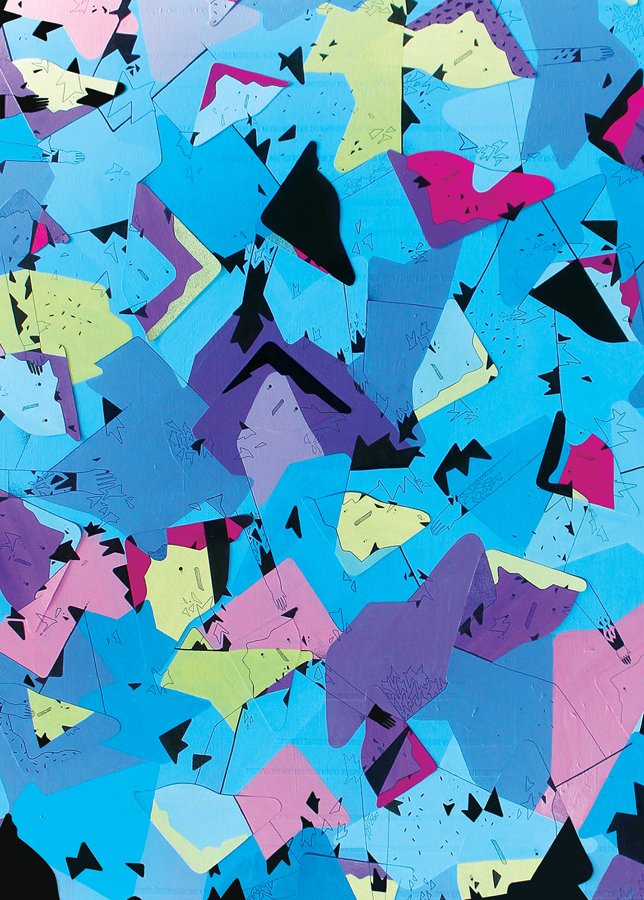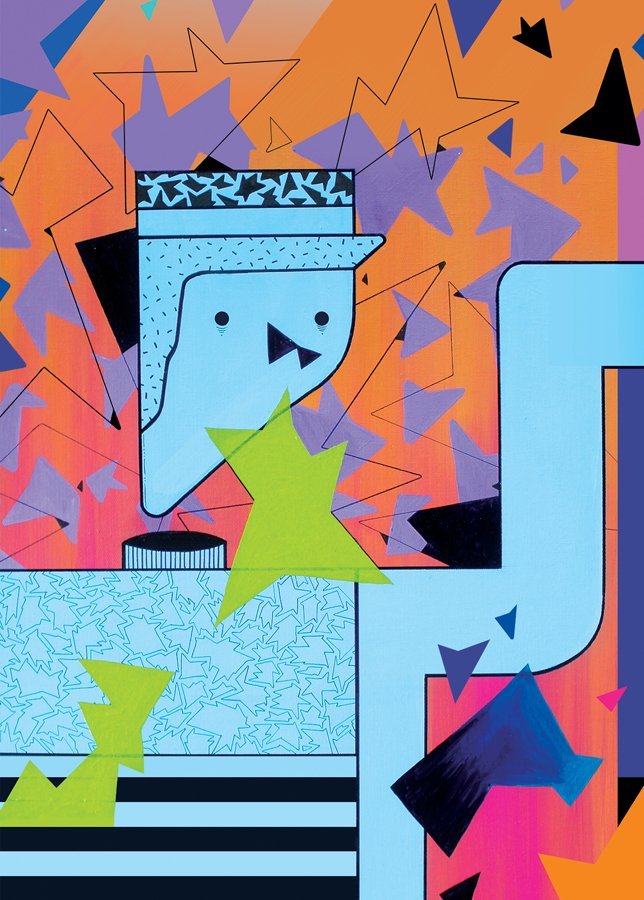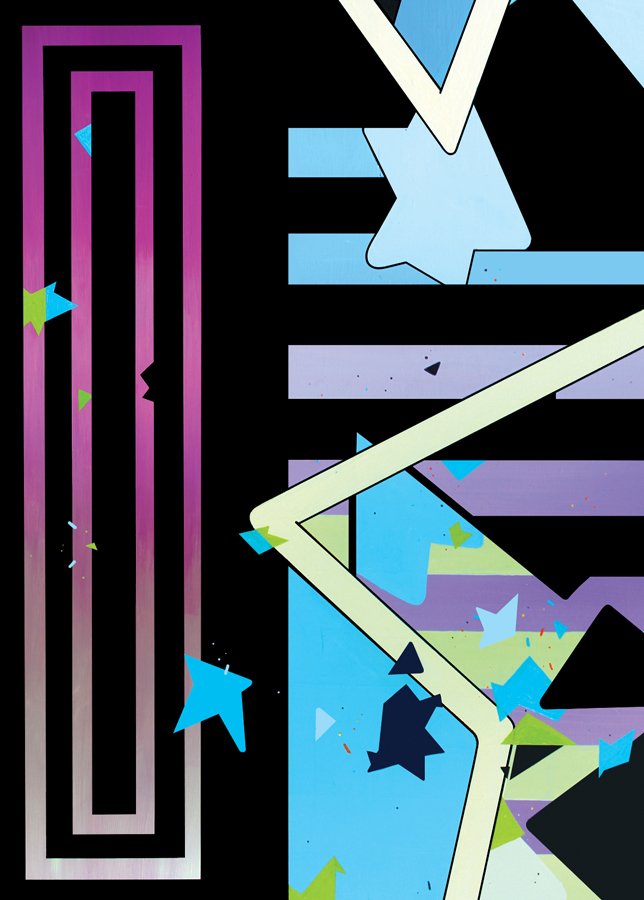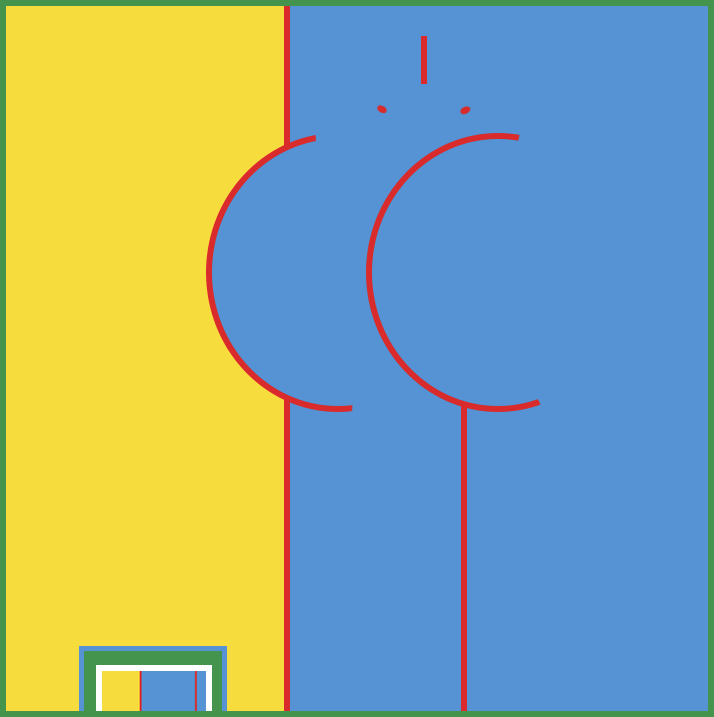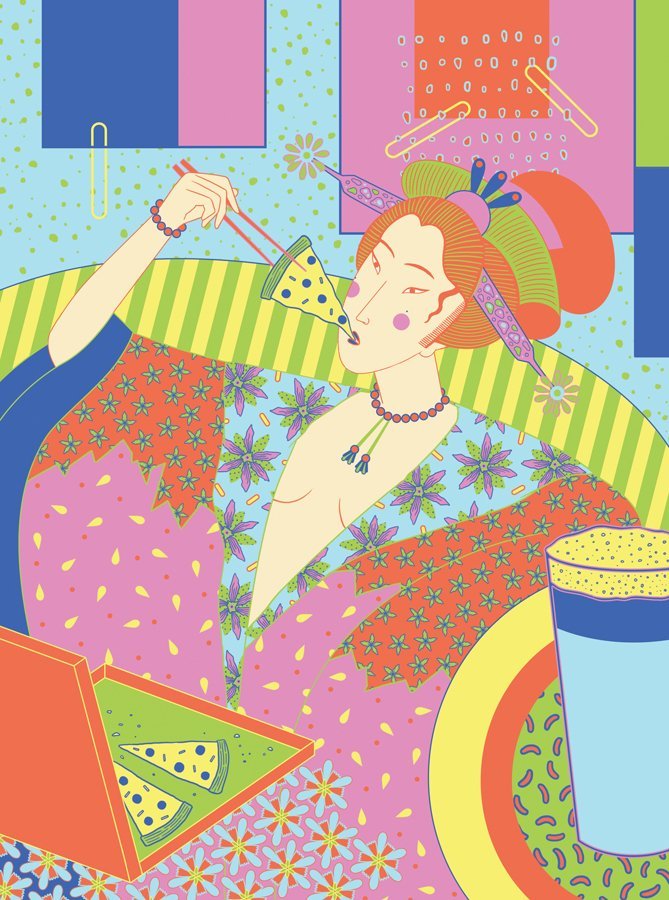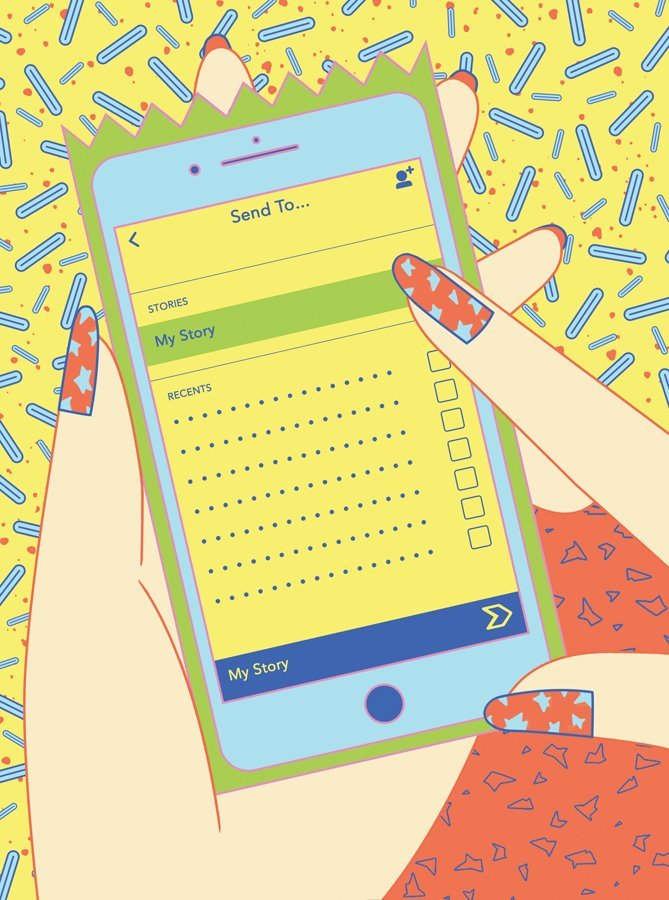From butt-spanking to having pizzas with chopsticks, a look at Brindha Kumar's cheeky illustrations
Illustrator Brindha Kumar takes us on a cross-continental journey through Malaysia, India and London to decode the local influences that inform her punchy artworks.
Brindha Kumar’s body of work has an infectious vibe, where abstract shapes and blinding colours collide in each artwork. Originally from Kerala, the Malaysia-based illustrator grew up in Kuala Lumpur. But it was only after moving to London to pursue graphic design that Brindha began reflecting on the richness of her roots. From local food to popular culture and sexuality, the themes that run through her art hint at the ever-morphing impact each city and space has on her.
Baboon, a self-published a zine by Brindha, draws inspiration from exhibitions, fairs and her surroundings in London. A more recent project called Japaneasy, featuring a series of postcards, takes a satirical look at today’s youth culture and the millennial obsession with social media, starring an Edo-period Japanese woman who eats pizza with chopsticks and flaunts Snapchat filters while taking selfies with her pet cat. Last year, Brindha debuted her solo exhibition Kochi inspired by a visit to her grandfather’s house in Kerala.
Brindha joins us for a chat about reconnecting with her heritage and the eclectic experiences she injects into her craft.
You were born in Kuala Lumpur but your family’s roots trace back to South India. How did Indian or Malaysian art and culture play a role in shaping your creativity?
Ironically, the effect of culture only started to seep into my work after I left Malaysia to study in London. It was while I was abroad that I saw the distinct differences in Asian and Western culture and ideas started stemming from this beautiful contrast. Back at home, we’d all sit down together for a meal. In Malaysia, everything revolves around great food and great company! Eating together is almost a ritual, as there is no better way to get in touch with friends and relatives. In fact, I missed it so much that I created a series of postcards titled Sudah Makan? as a part of my final year project that celebrated Malaysian cuisine and street food in all its glory.
You credit your mother for developing the artist in you. What was her contribution in your journey as an artist?
My mother is quite artistic herself and would spend hours drawing with me. I was fascinated by her sketches and especially loved the way she played with typography. She would whip up these beautiful hand-lettered cards for family and friends. It was intriguing to see how the same word, when drawn in different ways, could invoke such diverse feelings. She also had a keen interest in Indian dance and music, which sensitised me to my roots.
Another person that played a huge role in my artistic journey is my art teacher, Mrs Chee. I enrolled in art classes when I was eight years old. She nurtured my passion for illustration and taught me a great deal.
In your solo show titled Kochi, you translated your experience of wandering around the city into fragmented explosions of colours and shapes. How did the creative process flow?
It was my first time visiting India and meeting my extended family, so every encounter was fresh and new. The backwaters were amazing; it’s hard to forget the long boats rides, the calm water and the vegetation in the background. I particularly enjoyed the Onam festival as this was the closest I had ever come to being so immersed in my heritage. The visuals from the early morning festivities at the temple, the myriad colours and the sounds of the famous chenda kalli - where a band of musicians play drums - were all moments that I translated into the artworks. The chaos of Kochi, the auto rickshaw rides, the never ending visits to relatives’ homes all produced a burst of emotions in my mind.
So the whole creative process came naturally to me. The moment I saw or felt something that resonated with me, I snapped a sort of mental image. That happened throughout my journey and when I got back home to Malaysia, I went straight to my sketchbook and worked on some drawings, which then ended up in my first solo exhibition.
Is there ever a conscious effort to retain your Indianness in your work?
I think being a Malaysian, I am always connected to my identity as an Indian as we have a very diverse ethnic society. Being Indian is all I know and this manifests subconsciously in my work. I never really thought about having to retain my Indianness; it’s not something that I feel I need to put out there and neither is it something I shy away from.
How did studying in London College of Communication (LCC) and the city itself help broaden your horizons?
Being in UK for the first time by myself was a huge culture shock for me. London is a constant springboard of inspiration as there are so many diverse art events happening around town, from talks to workshops to art fairs and exhibitions. In 2015, while I was studying at LCC, I had gone to several exhibitions such as Post Pop: East Meets West, Bear Witness, Grayson Perry: Who Are You? and Magnificent Obsessions: The Artist as Collector. At each event, I would take pictures of anything that caught my eye, be it paintings, sculptures or installations. I compiled all of these rich visuals in a zine titled Baboon, featuring a series of illustrations that drew from my memories of navigating the city over five months.
With your series like Butts and Girls, you tread over the realm of illustration and into animation. When did you start experimenting with GIFs?
I learnt how to work with frame animation on Photoshop while I was in university. I started playing around with it because it was really exciting to see my illustrations move. The GIFs that I make are still really simple, I would definitely like to be more adventurous with the animations I create. I am refreshing my memory in After Effects so I can create more detailed animations.
A defining feature of your work is the electric, often infectious neon hues that run through your projects. What inspires these colour palettes and how do you build them?
Colours have always had a very strong hold on my creative process. I never shy away from mashing up different hues in a single artwork. Whenever I'm taking a break from work, I pick up visual cues as I scroll through my Instagram feed and browse posters on Pinterest. While traveling, I try and decode the personality of every city through the colours I see around me.
When working on an artwork, I usually start with one or two hues that immediately come to mind, and then I slowly expand it into a palette that changes slightly as I further develop it.
This article was originally published on Design Fabric.

